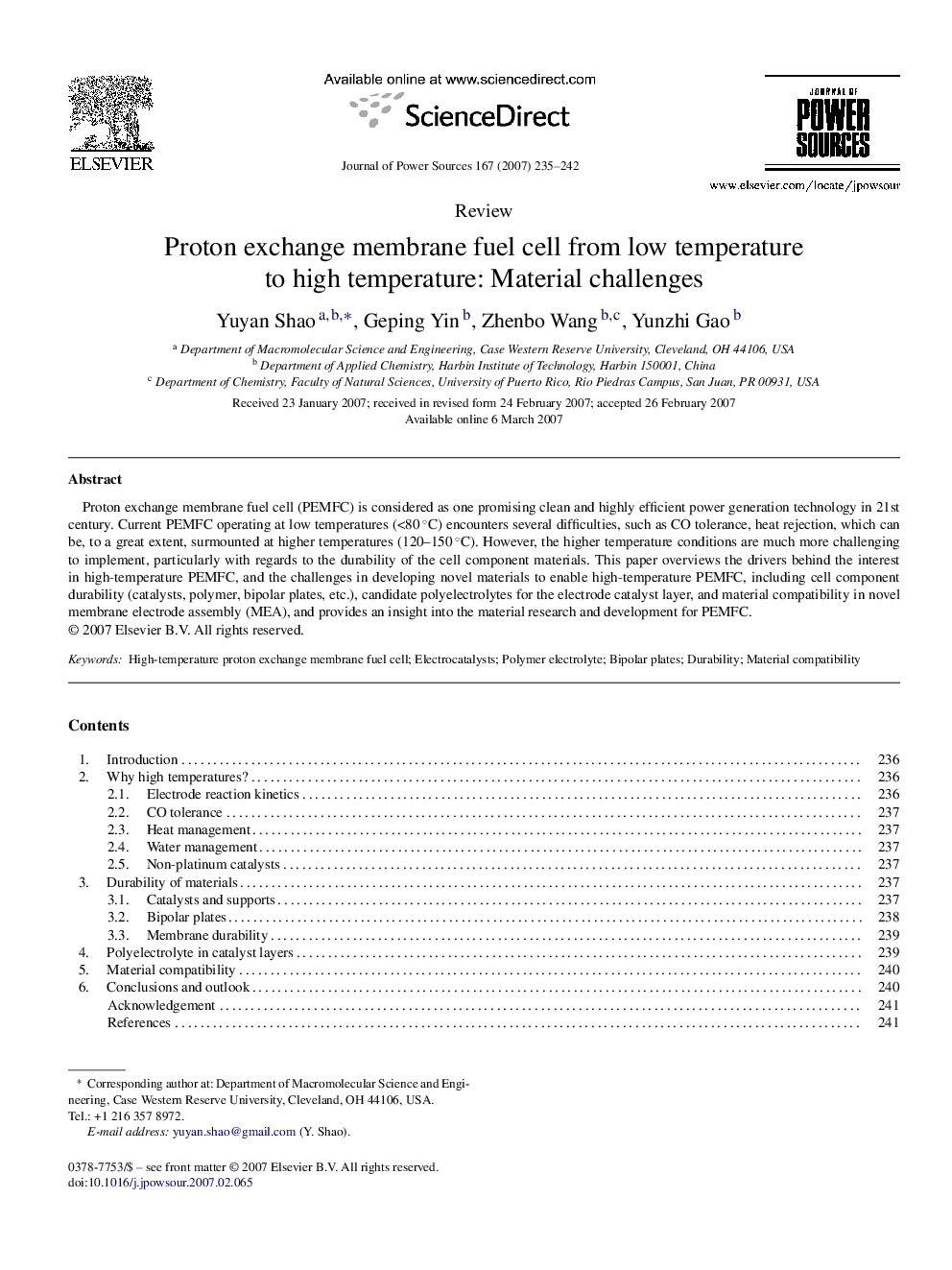| Article ID | Journal | Published Year | Pages | File Type |
|---|---|---|---|---|
| 1290764 | Journal of Power Sources | 2007 | 8 Pages |
Proton exchange membrane fuel cell (PEMFC) is considered as one promising clean and highly efficient power generation technology in 21st century. Current PEMFC operating at low temperatures (<80 °C) encounters several difficulties, such as CO tolerance, heat rejection, which can be, to a great extent, surmounted at higher temperatures (120–150 °C). However, the higher temperature conditions are much more challenging to implement, particularly with regards to the durability of the cell component materials. This paper overviews the drivers behind the interest in high-temperature PEMFC, and the challenges in developing novel materials to enable high-temperature PEMFC, including cell component durability (catalysts, polymer, bipolar plates, etc.), candidate polyelectrolytes for the electrode catalyst layer, and material compatibility in novel membrane electrode assembly (MEA), and provides an insight into the material research and development for PEMFC.
